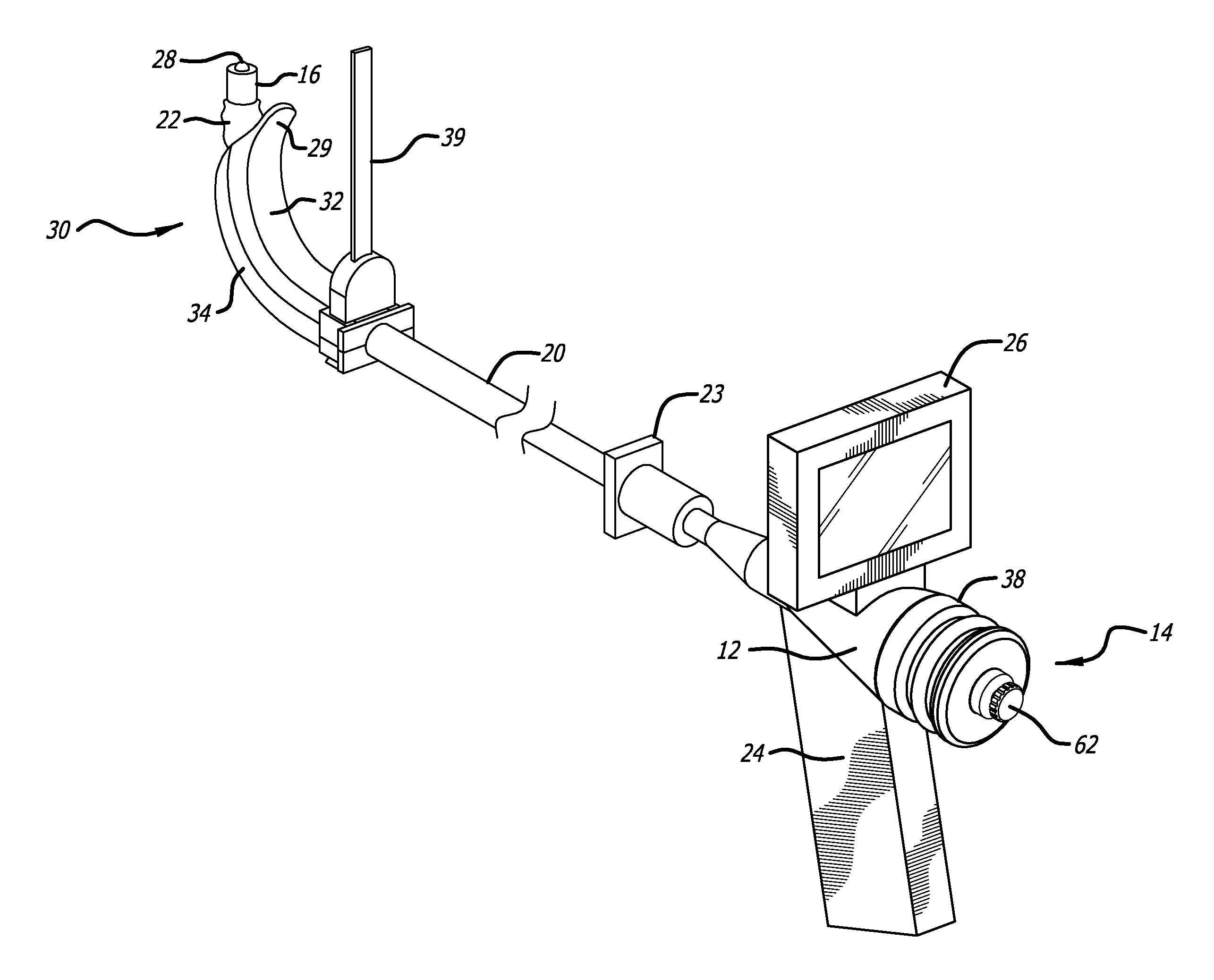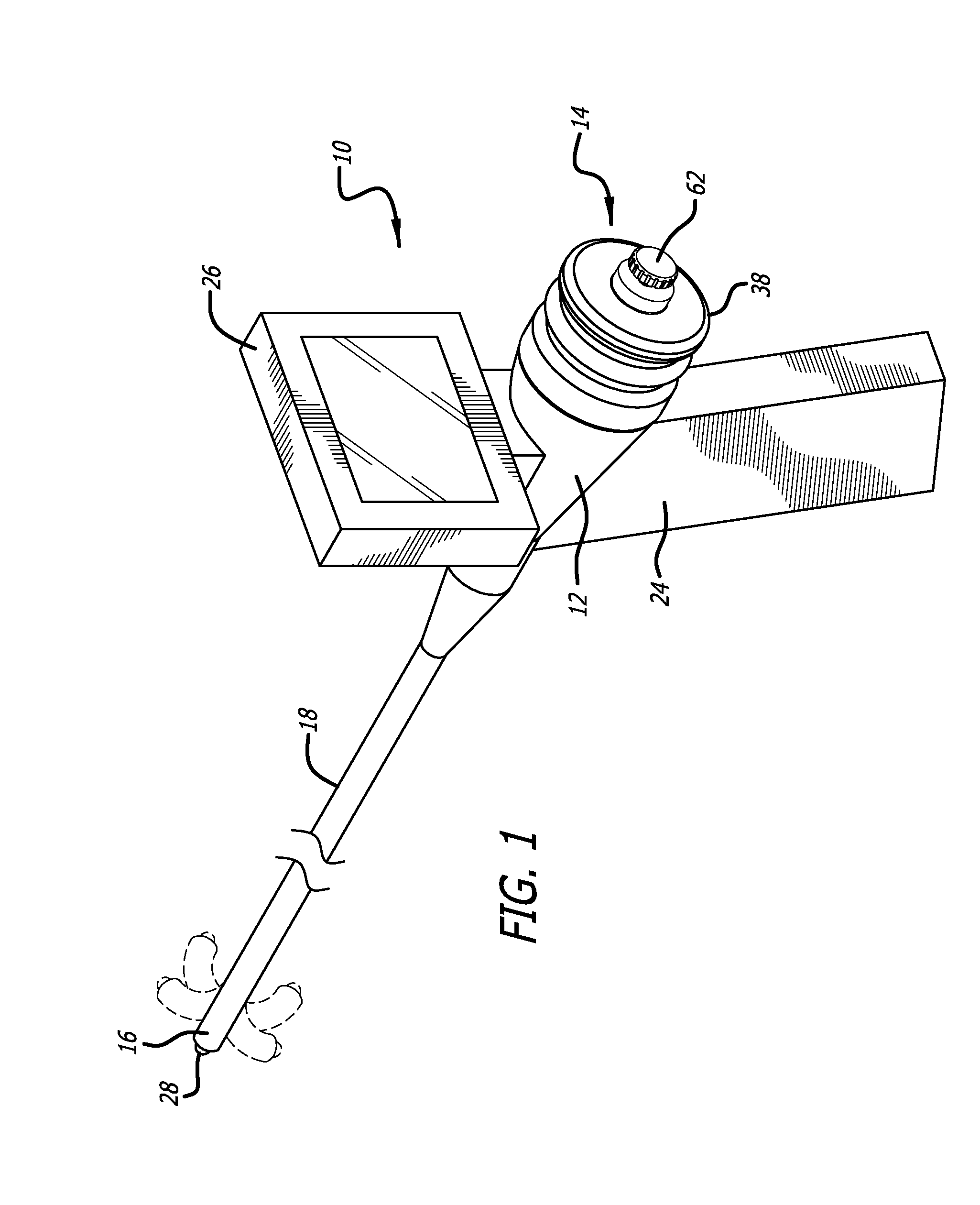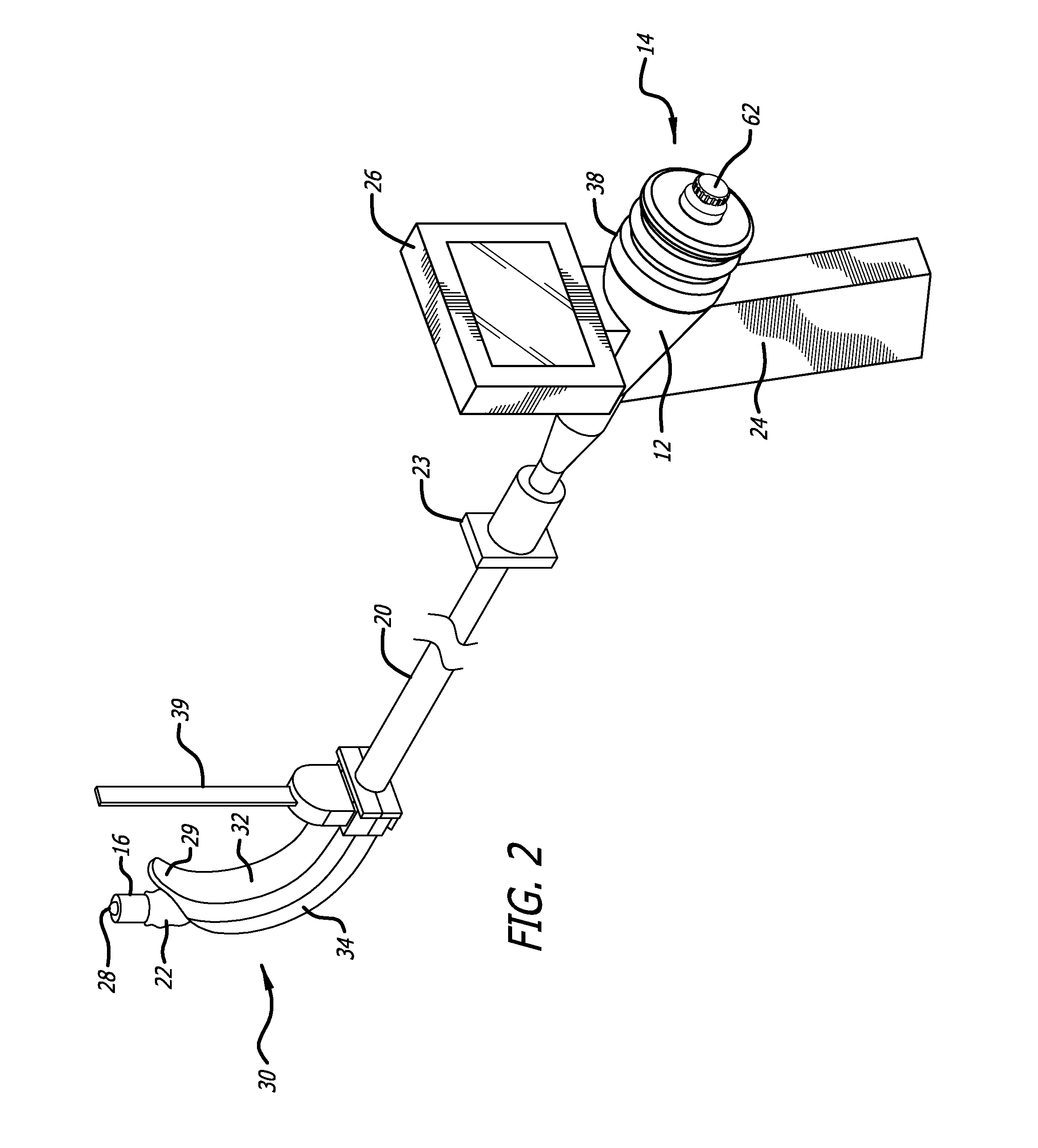Endotracheal intubation devices
a technology of intubation device and endotracheal tube, which is applied in the field of endoscopic devices, can solve the problems of multiple attempts to use different equipment, inability to unaided visualization of the airway beyond the tongue, and inability to visualize the airway unaided, and achieve the effect of easy separation and easy removal
- Summary
- Abstract
- Description
- Claims
- Application Information
AI Technical Summary
Benefits of technology
Problems solved by technology
Method used
Image
Examples
Embodiment Construction
[0061]Embodiments of devices made in accordance with the present invention will now be described in detail with reference to the accompanying drawings. Referring initially to FIGS. 1 and 2, a hermetically-sealed endoscope 10 made in accordance with the present invention includes an outer casing 12 which houses a steering control mechanism 14 that can be manually manipulated to steer the distal end 16 of a flexible or malleable shaft 18 to a number of different angular positions. The steerable distal end 16 is shown in its neutral position (where the distal end is substantially straight) which maximizes the number of different angular positions that can be taken achieved. Just a few of the numerous angular positions that can be attained by the distal end 16 are represented by dotted lines appearing in FIG. 1. A removable endotracheal tube 20 (FIG. 2) with an inflatable balloon cuff 22 located at its distal end and a t-piece fitting 23 at its proximal end can be placed co-axially over...
PUM
 Login to View More
Login to View More Abstract
Description
Claims
Application Information
 Login to View More
Login to View More - R&D
- Intellectual Property
- Life Sciences
- Materials
- Tech Scout
- Unparalleled Data Quality
- Higher Quality Content
- 60% Fewer Hallucinations
Browse by: Latest US Patents, China's latest patents, Technical Efficacy Thesaurus, Application Domain, Technology Topic, Popular Technical Reports.
© 2025 PatSnap. All rights reserved.Legal|Privacy policy|Modern Slavery Act Transparency Statement|Sitemap|About US| Contact US: help@patsnap.com



